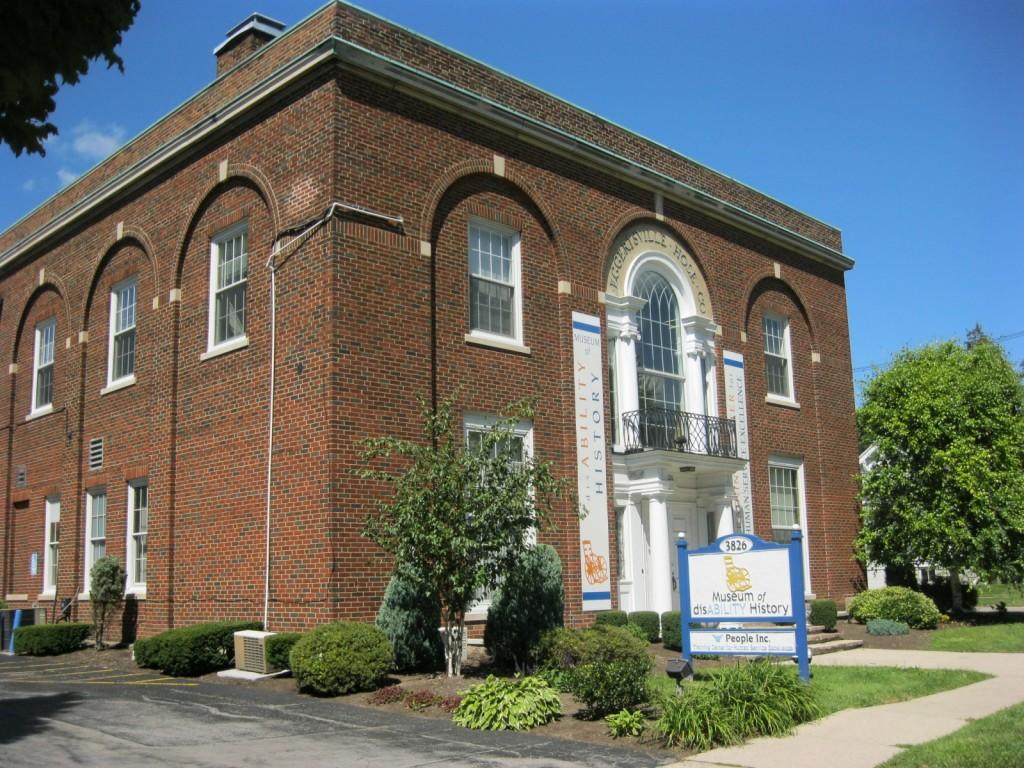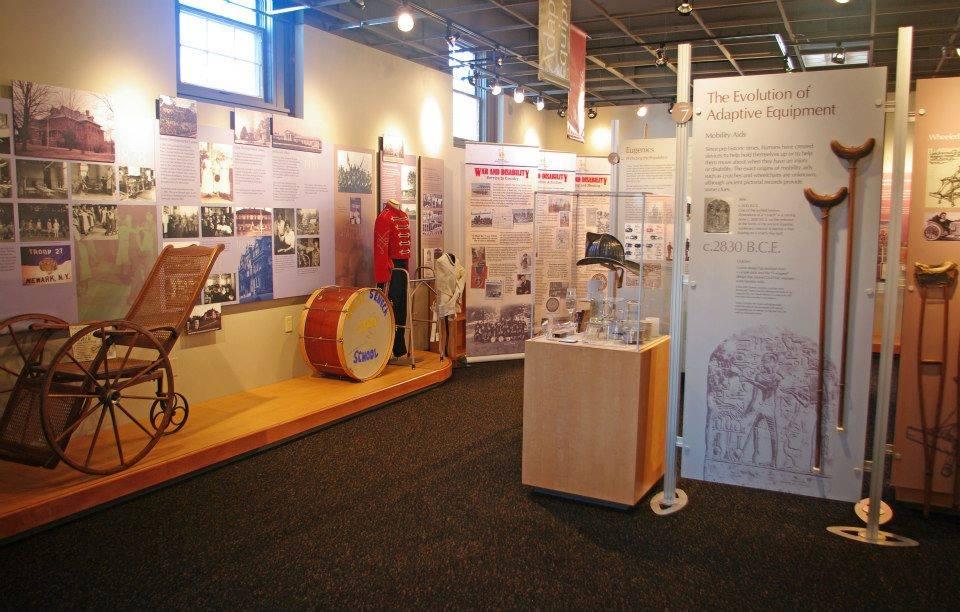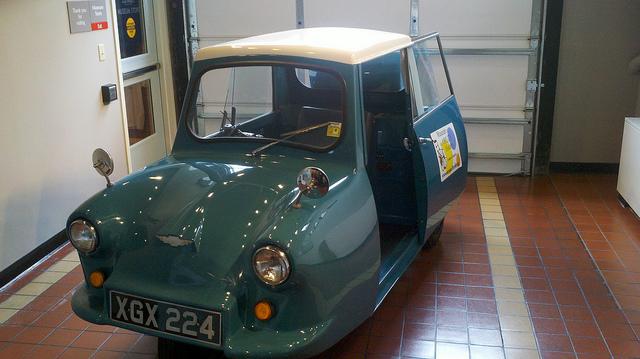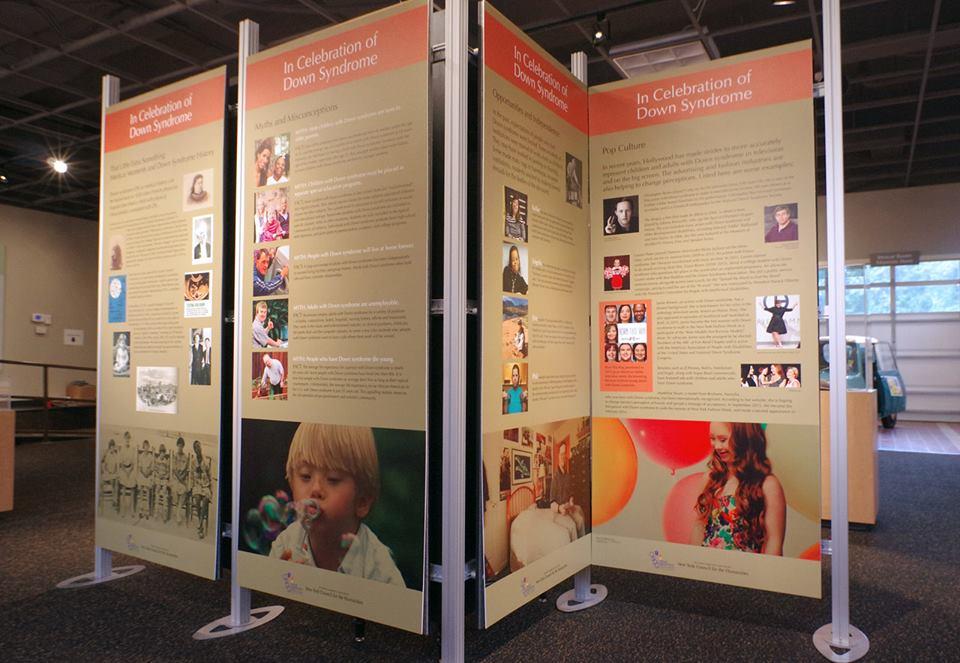- + LET'S GO THERE
- SKIING / WINTER ADVENTURE
- + THINGS TO DO
- + TOURS
- + WINE & DINE
- + STAY
- CALENDAR
- + MAPS, BLOGS & MORE
- Site Search
Buffalo’s Museum of disABILITY History Gives New Perspective to the Past
posted by Teresa Farrell at 2019-02-20 19:44:00
The Western New York city of Buffalo is so rich in culture that it’s home to more than 30 museums dedicated to art, science, history and everything in between. But one of the most unique museums in the area—in fact, in the entire country—is the Museum of disABILITY History.
 For more than 20 years, the Museum of disABILITY History has been the only brick and mortar museum of its kind in the United States. It was established in 1998 by James Boles, the president and CEO of human services agency People Inc., when he was teaching a course on developmental disabilities at the University at Buffalo. Boles wanted to direct his students to a resource that would provide a comprehensive look at disability history, but no such thing seemed to exist. So he organized a small committee, started collecting artifacts, and the Museum of disABILITY History was born.
For more than 20 years, the Museum of disABILITY History has been the only brick and mortar museum of its kind in the United States. It was established in 1998 by James Boles, the president and CEO of human services agency People Inc., when he was teaching a course on developmental disabilities at the University at Buffalo. Boles wanted to direct his students to a resource that would provide a comprehensive look at disability history, but no such thing seemed to exist. So he organized a small committee, started collecting artifacts, and the Museum of disABILITY History was born. Today, the museum has grown enough to move out of its original location and into a larger space on Main Street in Buffalo, and it serves as a resource for educating the public, commemorating champions for disability rights, and chronicling the history of disability in culture going all the way back from medieval times to the present day. As the introductory exhibit points out, “As long as there have been people, there have been people with disabilities,” and the museum chronicles both the progress and pitfalls of that history. There are six wings, covering media, medicine, society, education, advocacy, and disability history in New York State in particular.
Today, the museum has grown enough to move out of its original location and into a larger space on Main Street in Buffalo, and it serves as a resource for educating the public, commemorating champions for disability rights, and chronicling the history of disability in culture going all the way back from medieval times to the present day. As the introductory exhibit points out, “As long as there have been people, there have been people with disabilities,” and the museum chronicles both the progress and pitfalls of that history. There are six wings, covering media, medicine, society, education, advocacy, and disability history in New York State in particular. Permanent exhibits address the evolution of care for individuals with disabilities, from old-time almshouses to the advent of state institutions; the role of disabilities in pop culture and sports; the history of eugenics in the US and around the word; and the evolution of adaptive equipment and mobility aids, including an exhibit on the Invacar, a three-wheeled carriage powered by a motorcycle-type engine that was made in made in Britain from 1948–1977. There are also temporary exhibits on a rotating basis; the most recent are “In Celebration of Down Syndrome” and “The Lives They Left Behind: Suitcases From A State Hospital Attic,” which uses artifacts found in the attic of the now-closed Willard Psychiatric Hospital in the Finger Lakes to tell the story and honor the memories of people who entered the facility and, in many cases, never left.
Permanent exhibits address the evolution of care for individuals with disabilities, from old-time almshouses to the advent of state institutions; the role of disabilities in pop culture and sports; the history of eugenics in the US and around the word; and the evolution of adaptive equipment and mobility aids, including an exhibit on the Invacar, a three-wheeled carriage powered by a motorcycle-type engine that was made in made in Britain from 1948–1977. There are also temporary exhibits on a rotating basis; the most recent are “In Celebration of Down Syndrome” and “The Lives They Left Behind: Suitcases From A State Hospital Attic,” which uses artifacts found in the attic of the now-closed Willard Psychiatric Hospital in the Finger Lakes to tell the story and honor the memories of people who entered the facility and, in many cases, never left. In addition to its physical collections, the museum offers a virtual tour of its exhibits and artifacts that can be accessed online from anywhere, as well as traveling exhibits that make their way around the country. The museum also offers a host of programs, workshops and special events designed to educate and raise awareness, covering everything from film festivals and speaker series to disability etiquette programs. Program vary, but the museum is open Tuesday-Friday from 10 a.m. to 4 p.m. and Saturdays from 10 a.m. to 2 p.m.
In addition to its physical collections, the museum offers a virtual tour of its exhibits and artifacts that can be accessed online from anywhere, as well as traveling exhibits that make their way around the country. The museum also offers a host of programs, workshops and special events designed to educate and raise awareness, covering everything from film festivals and speaker series to disability etiquette programs. Program vary, but the museum is open Tuesday-Friday from 10 a.m. to 4 p.m. and Saturdays from 10 a.m. to 2 p.m.PHOTO CREDITS
Museum building photo credit Museum of disABILITY History
Adaptive Equipment exhibit photo credit Museum of disABILITY history
In Celebration of Down Syndrome photo credit Museum of disABILITY History
Invacar exhibit photo credit Justin Brockie
posted at: 2019-02-20 19:44:00, last updated: 2021-04-06 16:37:18
















